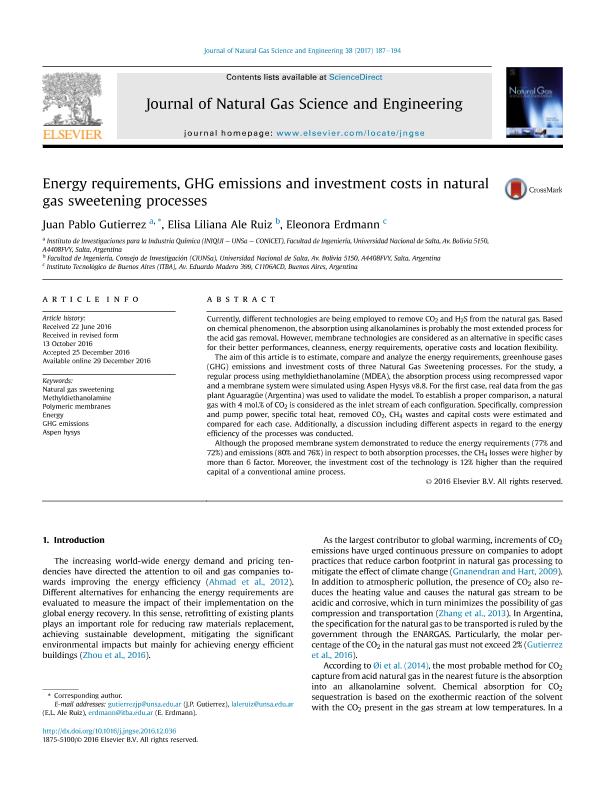Artículo
Energy requirements, GHG emissions and investment costs in natural gas sweetening processes
Fecha de publicación:
06/2017
Editorial:
Elsevier Science
Revista:
Journal of Natural Gas Science and Engineering
ISSN:
1875-5100
Idioma:
Inglés
Tipo de recurso:
Artículo publicado
Clasificación temática:
Resumen
Currently, different technologies are being employed to remove CO2and H2S from the natural gas. Based on chemical phenomenon, the absorption using alkanolamines is probably the most extended process for the acid gas removal. However, membrane technologies are considered as an alternative in specific cases for their better performances, cleanness, energy requirements, operative costs and location flexibility. The aim of this article is to estimate, compare and analyze the energy requirements, greenhouse gases (GHG) emissions and investment costs of three Natural Gas Sweetening processes. For the study, a regular process using methyldiethanolamine (MDEA), the absorption process using recompressed vapor and a membrane system were simulated using Aspen Hysys v8.8. For the first case, real data from the gas plant Aguaragüe (Argentina) was used to validate the model. To establish a proper comparison, a natural gas with 4 mol.% of CO2is considered as the inlet stream of each configuration. Specifically, compression and pump power, specific total heat, removed CO2, CH4wastes and capital costs were estimated and compared for each case. Additionally, a discussion including different aspects in regard to the energy efficiency of the processes was conducted. Although the proposed membrane system demonstrated to reduce the energy requirements (77% and 72%) and emissions (80% and 76%) in respect to both absorption processes, the CH4losses were higher by more than 6 factor. Moreover, the investment cost of the technology is 12% higher than the required capital of a conventional amine process.
Archivos asociados
Licencia
Identificadores
Colecciones
Articulos(INIQUI)
Articulos de INST.DE INVEST.PARA LA INDUSTRIA QUIMICA (I)
Articulos de INST.DE INVEST.PARA LA INDUSTRIA QUIMICA (I)
Citación
Gutierrez, Juan Pablo; Ale Ruiz, Elisa Liliana; Erdmann, Eleonora; Energy requirements, GHG emissions and investment costs in natural gas sweetening processes; Elsevier Science; Journal of Natural Gas Science and Engineering; 38; 6-2017; 187-194
Compartir
Altmétricas




